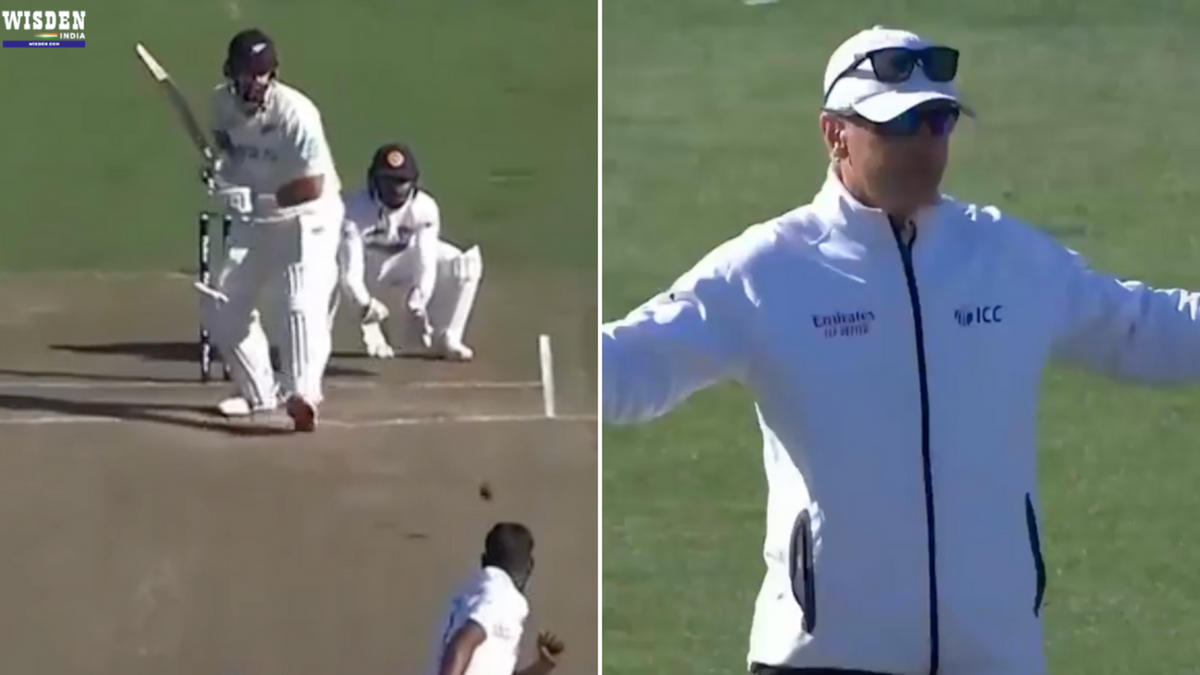
What constitutes a wide in a Test match was once again a point of discussion on the final day of the first Test match between New Zealand and Sri Lanka in Christchurch.
The debate was sparked as Sri Lanka were thwarted in their quest to remain in World Test Championship final contention, losing to New Zealand by two wickets after the Black Caps scrambled the winning run off the last ball of the match.
Earlier in the day, Prabath Jayasuriya had been warned by umpire Chris Gaffaney after he sent down several deliveries well wide of leg stump. With New Zealand facing a race against time to score the required runs after rain delayed the start of play, Jayasuriya’s bowling tactic was interpreted as a negative tactic by the officials.
As Jayasuriya continued to bowl the ball well behind Daryl Mitchell in the 38th over of New Zealand’s final innings, Gaffaney called him for three wides in the over. Following the calls, Angelo Matthews went over to speak to Gaffaney, questioning why seamers hadn’t been called for similarly aimed leg-side deliveries throughout the match. Gaffaney could be heard telling Matthews “We’ll discuss later,” before Matthews replied: “(It) has to be fair to by the seamers and spinners both I reckon.”
The MCC Laws of Cricket state under law 22.1.4: “For bowlers who umpires consider to be bowling down the leg side as a negative tactic, the strict limited over Wide interpretation shall be applied.”
It is for the umpires to determine what counts as a ‘negative tactic’ with Gaffaney likely having taken the match situation in hand when making the call.
Speaking after the match, Sri Lanka captain Dimuth Karunaratne said: “We just wanted to check when the fast bowlers are bowling with the 7-2 field, even the leg side 6-3 field, they didn’t call a wide, so that’s why I’m asking why the same thing that Jayasuriya was doing – because there was nothing in the good area for Jayasuriya. There’s a rough on the leg side, so we were just trying to get the maximum out of it and that’s not negative bowling.”
Given the miniscule margin of victory – approximately four inches of Kane Williamson’s bat – the wides could be argued to have a decisive role in the result of the match.








